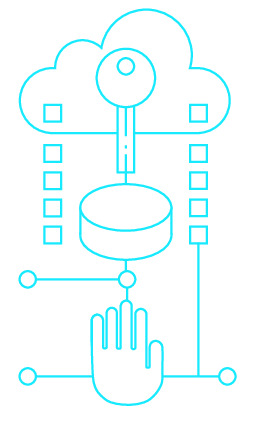|
|
|
| Module code: PIB325 |
|
|
4V (4 hours per week) |
|
5 |
| Semester: 3 |
| Mandatory course: yes |
Language of instruction:
German |
Assessment:
Written exam
[updated 30.07.2021]
|
DFBI-322 (P610-0529) Computer Science and Web Engineering, Bachelor, ASPO 01.10.2018
, semester 4, mandatory course, course inactive since 08.03.2017
PIB325 (P221-0037) Applied Informatics, Bachelor, ASPO 01.10.2011
, semester 3, mandatory course
|
60 class hours (= 45 clock hours) over a 15-week period.
The total student study time is 150 hours (equivalent to 5 ECTS credits).
There are therefore 105 hours available for class preparation and follow-up work and exam preparation.
|
Recommended prerequisites (modules):
PIB225 Digital Electronics
[updated 19.12.2013]
|
Recommended as prerequisite for:
PIB525 Microprocessor Engineering
PIBWI45 Database Management
[updated 02.01.2018]
|
Module coordinator:
Prof. Dr.-Ing. Jürgen Schäfer |
Lecturer:
Prof. Dr. Matthias Leiner
[updated 19.12.2013]
|
Learning outcomes:
After successfully completing this module, students will undertsand how digital computers are structured, organized and how they operate. The architecture elements of a computer will be discussed and combined to form a sample architecture. Students will also be familiar with performance enhancement techniques such as pipelining and caching, as well as interaction with peripheral components. On the basis of case studies involving different processors, the architecture features discussed in the module will be verified.
[updated 30.07.2021]
|
Module content:
1. Representing numbers in the computer
2. von Neumann architecture
3. Electronic memory
4. Instruction set architecture
5. Sequential control and microprogramming
6. RISC processors
7. Pipelining
8. Cache
[updated 30.07.2021]
|
Recommended or required reading:
W. Schiffmann, R. Schmitz: Technische Informatik 2, Springer-Verlag, Berlin, 1999
K. Wüst, Mikroprozessortechnik, Vieweg-Verlag, Braunschweig, 2003
H. Malz, Rechnerarchitektur, Vieweg-Verlag, Braunschweig, 2004
J. L. Hennessy, D. A. Patterson: Rechnerarchitektur Analyse, Entwurf, Implementierung und Bewertung, Vieweg-Verlag, Braunschweig, 2004
P. Herrmann : Rechnerarchitektur – Aufbau Organisation und Implementierung, Vieweg-Verlag, Braunschweig, 2000
[updated 30.07.2021]
|
Module offered in:
WS 2017/18,
WS 2016/17,
WS 2015/16,
WS 2014/15,
WS 2013/14,
...
|


